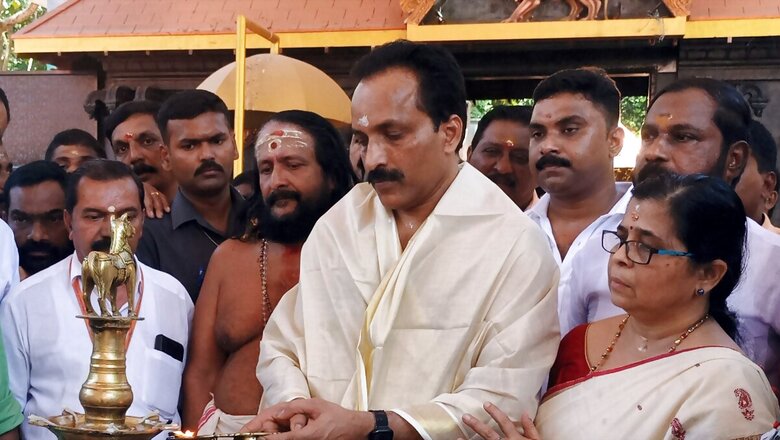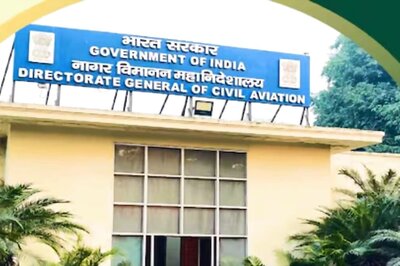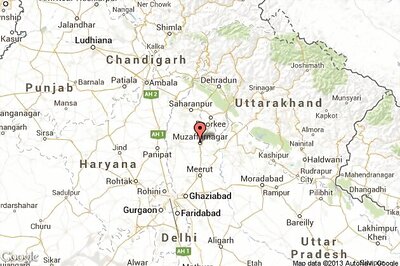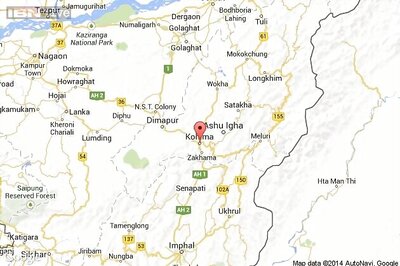Striking a Balance Between Science and Spirituality, How ISRO Chief S Somanath Reached for the Stars

views
S Somnath, Indian Space Research Organisation’s (ISRO) chairman, brings a remarkable balance between science, spirituality, and synergy. With a unique perspective on how one can find a balance in one’s life through inner engineering, Somnath successfully launched India’s coveted space exploration project, Chandrayaan-3.
His team and India now have successfully launched the Aditya-L1 solar mission. Before the lift-off on Saturday, Somnath visited the renowned Tirupati Thirumala Devasthanam to seek the blessings of Lord Balaji.
Somnath, underlines that science and spirituality are two different entities, and that there is no need to mix the two. Having said that, he astutely calls himself an explorer — of the moon and the mind.
Seeking Blessings
“I am an explorer. I explore the moon. I explore the inner space. It’s part of the journey of my life to explore both science and spirituality. So, I visit many temples and I read many scriptures. I try to find the meaning of our existence and our journey in this cosmos. It’s part of the culture that we are all built to explore and find out the inner self as well as the outer self. So, for the outer, I do science, for the inner, I go to temples…” he had said, after offering prayers at the renowned Bhadrakali Temple in Thiruvananthapuram’s Pournamikavu after the successful landing of Chandrayaan-3.
A day before Chandrayaan-3 was launched, the ISRO chief sought the blessings of Sri Chengalamma Parameswari temple at Sullurpeta, 22 km west of India’s space launch pad, Sriharikota.
“I need the blessings of Chengalamma Devi…I came here to pray and seek the blessings for the success of this mission,” Somnath had told reporters then.
Temple authorities say seeking the goddess’s blessings before the rocket launches has been a tradition for ages. Scientists who are part of the launch programme perform puja at the Chengalamma temple.
Not just the ISRO chairman, a team of scientists, the authorities at the famous Lord Venkateswara temple near Tirumala were seen offering prayer hours before the run-up to the Chandrayaan-3 launch.
Space, Sanskrit and Science
In one of his lectures at Maharshi Panini Sanskrit and Vedic University in Ujjain in May this year, Somnath highlights another “S” to his repertoire — his deep interest in Sanskrit and its role in Science.
He points out that India was a knowledge society since Vedic times involving maths, medicine, metaphysics and astronomy written in Sanskrit, but all such learning came back to the country several thousand years later as “discoveries by Western scientists”.
“Surya Sidhanta, the very first book I came across in Sanskrit, talks about the domain I am familiar with. This book specifically talks about the solar system, how planets move around the sun, periodicity of this movement, timescales, etc,” he said in his lecture.
Chandrayaan-3 Mission
With the Chandrayaan mission progressing well, the ISRO scientists await path-breaking data from the moon, especially like how the lander recorded the surface temperature of around 70 degrees when the scientists believed that it could be somewhere around 20 degrees to 30 degrees centigrade.
The ISRO chief spoke of the different challenges faced by Chandrayaan-3, including thermal and communication blackout problems.
India is the first country to land on the south pole of the moon, and there was a reason behind choosing the location.
Its surface is rich in minerals and data gathered through the rover will provide a wealth of information from the lunar surface. Moon’s South Pole, being less illuminated by the sun, also has tricky terrain.
The surface of the moon does not have an atmosphere, the shadows are all dark, and this was making it difficult to get clearer photographs, Somnath explained.
On naming Chandrayaan-3’s landing point as ‘Shiva Shakti,’ the ISRO chairman found nothing wrong as “PM Modi narrated the meaning of the name in a manner that suits everyone”.
Moon to Sun
Riding on the top of the moon, ISRO launched the Aditya-L1 mission, India’s first space-based solar mission, on September 2, Saturday. This is expected to study the Sun’s layers over a period of five years.
“India has the capability to travel to the Moon, Mars, and Venus, but we need to increase our confidence. We need more investment, and the space sector must develop, and by this, the whole nation should develop; that is our mission. We’re ready to fulfil the vision that was given to us by PM Modi,” Somnath said soon after the success of the moon mission.
The ISRO chairman said Gaganyaan, India’s first human spaceflight programme, can be expected to be launched in 2025. The mission is under progress as the Covid-19 pandemic delayed its progress.
Mechanical to Space Engineering
In his four-decade professional trajectory, Somnath displayed his unbeatable skill in resolving issues and bringing a project back on track — be it the Polar Satellite Launch Vehicle (PSLV) in 1994 or Chandrayaan in 2023. In 1994, at the launch of the PSLV, the rocket developed a minor glitch. Somnath, then a young engineer at ISRO, joined his seniors to resolve the problem, which went on to be successfully launched in a matter of minutes.
The son of a Hindi teacher, he was born and raised in the Alappuzha district of Kerala. His interest in space developed when he was pursuing Mechanical Engineering from Kerala University. His interest in space research was further ignited when he specially requested his professor to teach him a course on rocket propulsion, which was actually out of syllabus.
He later pursued a master’s degree in aerospace engineering from the Indian Institute of Science, Bengaluru, and in 1985 joined ISRO and was inducted as the team lead for the PSLV programme.
Specialising in launch vehicle system engineering, structural design, structural dynamics, integration designs and procedures, mechanism design, and pyrotechnics, he played a crucial role in at least three successful missions of the Geosynchronous Satellite Launch Vehicle (GSLV), 11 successful missions of PSLV, and then the coveted Chandrayaan mission.
Somanath is not just a scientist who takes India to the stars, but he is also passionate about the stars on the cinema screen as he is known to be a film buff.



















Comments
0 comment